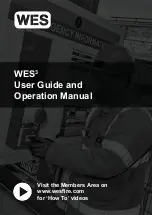
3-3
September 2004
ENVIRO-55 Engineered Fire Suppression System
38-KFSARG-000
3-6
ELECTRICAL CLEARANCE
All system components shall be located to maintain no less than minimum clearance from
energized electrical parts. Should a design insulation level not be available and where nominal
voltage is used for the design criteria, the highest minimum clearance listed for this group shall
be used.
The following references shall be considered as the minimum electrical clearance requirements
for the installation of clean agent systems:
ANSI C2,
National Electrical Safety Code
NFPA 70,
National Electrical Code
®
29 CFR 1910, Subpart S
NFPA 2001,
Standard for Clean Agent Fire Extinguishing Systems
3-7
AUTOMATIC DETECTION AND CONTROL
Detection, actuation and control systems shall be installed, tested and maintained in accordance
with the requirements of the Authority Having Jurisdiction (AHJ).
Automatic detection and actuation (release) is preferred. Selection of the detection devices
shall be determined based on an evaluation of the flammables involved, the environment and
the response time anticipated.
Means for manual release of the system shall be provided and located, installed and/or suitably
protected so that they are not within the protected area and not subject to mechanical, chemical
or other damage that would render them inoperative.
The control equipment shall supervise the actuating devices and the associated wiring and, as
required, cause actuation.
Audible or visual alarms, or both, shall be used to indicate the operation of the system, hazards
to personnel or failure of any supervised device. The device typeaudible or visualtheir number
and location shall be such to comply with all local and/or national codes.
Audible and visual predischarge alarms shall be provided within the protected area to give
positive warning of impending discharge. The operation shall be continued after discharge until
positive action has been taken to acknowledge the alarm and proceed with appropriate action.
The time delay between the predischarge alarm and discharge shall be sufficient to allow personnel
to evacuate prior to the discharge. Time delays shall be used only for personnel evacuation or to
prepare the hazard area for discharge (closing of doors, vents, shut down of equipment, etc.).






































